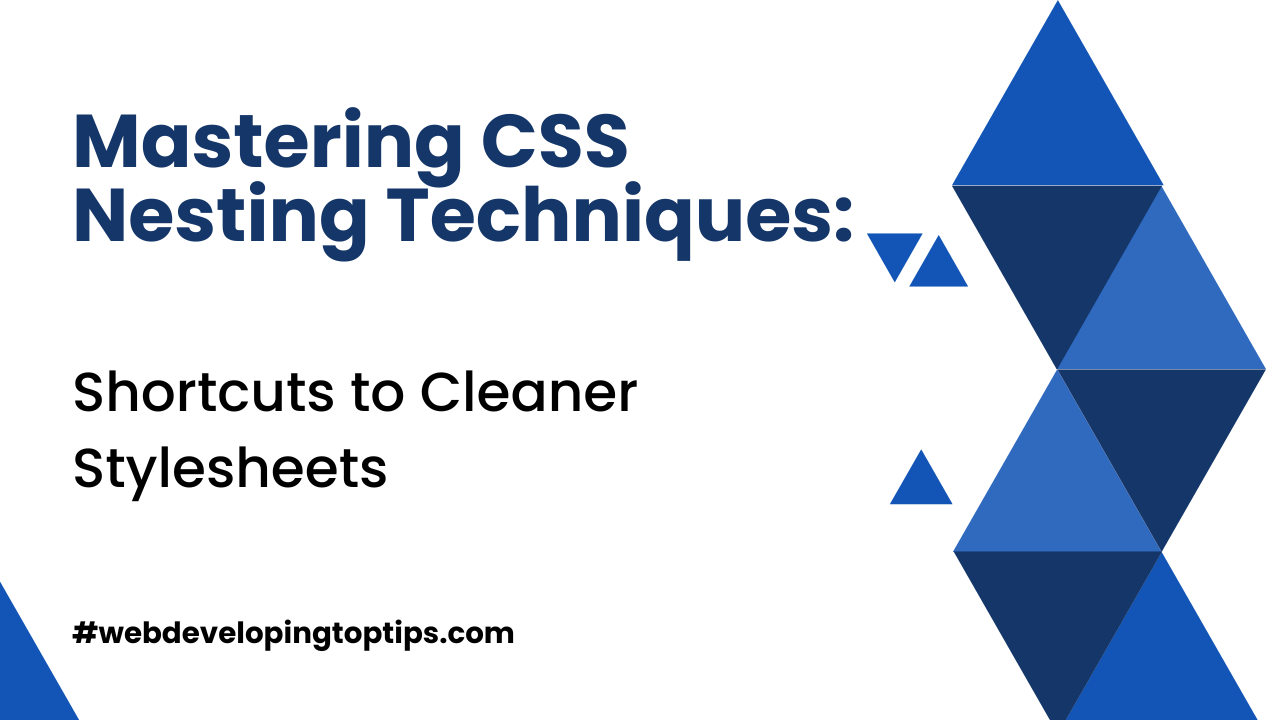Mastering CSS Nesting Techniques: Shortcuts to Cleaner Stylesheets
CSS nesting techniques have become indispensable tools in the arsenal of modern web developers. These techniques, often overlooked or underutilized, offer a powerful way to write more organized and maintainable CSS code. In this comprehensive guide, we’ll delve into the intricacies of CSS nesting techniques and uncover the shortcuts that can elevate your styling game.
The Fundamentals of CSS Nesting
Before we dive into the shortcuts, let’s establish a solid foundation. CSS nesting is the practice of placing one selector inside another, essentially creating a relationship between them. This allows you to target specific elements within a container, streamlining your code and enhancing readability.
```css
.parent {
color: 333;
background: fff;
.child {
font-size: 16px;
line-height: 1.5;
}
}
```
In this example, the `.child` selector is nested within the `.parent` selector, indicating that it applies styles exclusively to elements with the class `.child` that are contained within elements with the class `.parent`.
The Shortcut: Sass and SCSS
While CSS nesting is not natively supported in standard CSS, preprocessors like Sass and SCSS offer a shortcut to this functionality. They allow you to write nested selectors and automatically compile them into flat CSS.
Here’s the same code as above, but in SCSS:
```scss
.parent {
color: 333;
background: fff;
.child {
font-size: 16px;
line-height: 1.5; }
}
```
When compiled, it produces the equivalent CSS code. This makes your stylesheets more concise and easier to manage, especially when dealing with complex layouts or multiple levels of nesting.
Benefits of CSS Nesting Techniques
Improved Readability:
Nesting techniques create a clear hierarchy in your stylesheets, making it easier to understand the relationships between elements and their styles.
Reduced Repetition:
By nesting selectors within a parent, you can avoid repeating the parent selector, leading to DRY (Don’t Repeat Yourself) code.
Scoped Styles:
Nested selectors limit the scope of your styles, reducing the chances of unintended side effects on other elements.
Simplified Maintenance:
When you need to make changes to a specific section of your HTML structure, you can quickly locate and update the corresponding CSS rules.
Common Pitfalls to Avoid
While CSS nesting techniques offer numerous advantages, they can also introduce challenges if not used judiciously. Here are some common pitfalls to steer clear of:
Over-nesting:
Excessive nesting can lead to overly specific selectors, making your code fragile and difficult to maintain. Aim for a balanced approach.
Specificity Wars:
Nesting can increase selector specificity, potentially causing conflicts with other styles. Be mindful of this and avoid overly specific rules unless necessary.
Performance Impact:
Deeply nested selectors can lead to longer and less efficient CSS selectors, impacting page load times. Keep an eye on your generated CSS.
Leveraging the Power of CSS Nesting Techniques
In conclusion, CSS nesting techniques are a valuable tool in your CSS toolkit. They enhance code organization, improve readability, and reduce repetition. However, like any tool, they should be used wisely to avoid common pitfalls.
By mastering the shortcuts provided by preprocessors like Sass and SCSS, you can harness the benefits of CSS nesting while keeping your stylesheets clean and maintainable. As you continue to refine your coding skills, consider exploring these techniques further to streamline your web development workflow.

